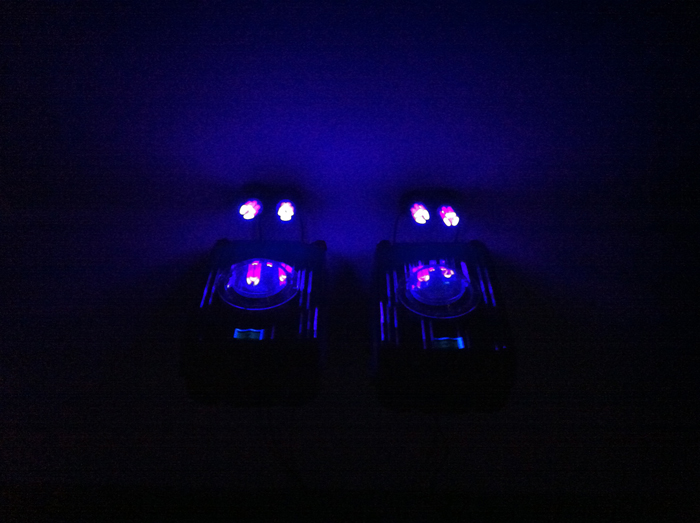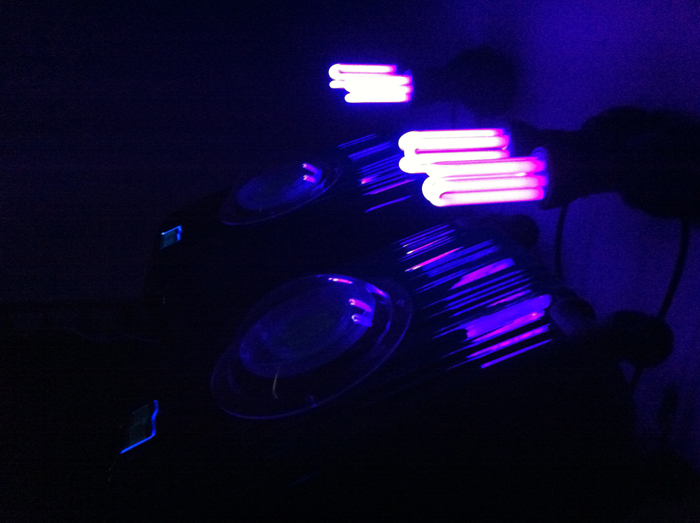Artist Statement: GUAG
Andre Brodyk
GUAG is a hybrid transgenic installation, comprised of simulated transgenic living material and inanimate portable objects. The work deals with the paradox of invisible bio-code used as an art practice and as a coding bio-art material at the molecular level. The ostensibly meaningless title of the work, GUAG, refers to the first and last two letters associated with part of a biological code, which was also thought to be meaningless. This is in terms of its biological code function; i.e., non-coding intronic DNA material, which is found in-between coding DNA in large scripts in humans, paradoxically the greatest arbiters of codes. A further paradox: while this material cannot code per se, it can regulate functional code as a portable transformer of biological function, therefore translate code-meaning. This is at the molecular level and also in a transdisciplinary context, as used in this work. This is used here as a novel bio-code ‘paint’ medium using a particular invisible non-coding molecule called a ‘Transposon’ embodied within re-coded transgenic E.coli. The conceptual and creative significance of this transposable element for this creative work is explained throughout.
To describe the installation GUAG, exhibited as part of CODE 2012, shows small circular paintings executed on nutrient agar ‘canvases’ and a small time-lapse moving-image video of these living paintings. The bio-coded paintings were displayed inside double-contained sealed Perspex vitrines fitted into portable, shiny reflective, hard-shell luggage cases, themselves floating in a space painted with black lights. Another mobile element, an orange fluro cone within which the video was visible, was a cautionary sign alluding to the hazard of forming fixed notions on code.

In terms of practice, the paint medium, in addition to having transposons, is composed of another particular non-code material. This has been derived from introns in the human beta-globin gene (i.e., a component of blood), notably being a medium also associated with transposable properties. This re-coded blood element is embodied in the body of the work, invisible inside a re-codeable transposable molecule (transposon) engineered inside E.coli bacteria. The original transformation of this re-coded painting medium was undertaken by the bio-artist in a molecular biology lab at the University of Newcastle.
The work, involving a transposable molecular code, is significant in that it comments on the paradox of coding, by using invisible bio-code, considered essentially to comprise of non-coding properties. The work is therefore a critique on the transposable nature of code as a concept.

Furthermore, the work executed in practice as a new bio-coded art paint medium is used to depict illustrated images of corn, which undergo a gradual change in appearance. The symbolic relevance of that imagery used here is that such transposable molecular elements were first discovered in research using corn by geneticist Barbara McClintock during the 1940s and 50s. So this transposable molecular material is a paradoxical bio-code, used to re-code meaning as a transformed ambulant paint medium depicting transposon containing imagery; i.e., corn.
This work comments on the paradoxical nature of an invisible, ostensibly biological non-code, transposed as a semiotic art concept made visible in the ambulant notion of painting itself. This is a re-coded transformation as idea and practice involving genetic engineering as a new instalment within the canon of the painting code.
Biographical Note
Dr Andre Brodyk is currently Post-Grad Convenor Fine Art, DFAM, University of Newcastle.